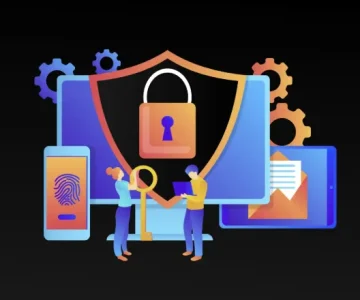Artificial Intelligence (AI) is increasingly playing a pivotal role in transforming various industries, and education is no exception. As the education sector evolves, AI is opening new doors to personalized learning experiences, increased efficiency, and enhanced decision-making. However, alongside these exciting opportunities, there are significant challenges that must be addressed to ensure that AI’s full potential is realized. Let’s take a closer look at the AI-driven transformations in education, the opportunities it offers, and the challenges that come with integrating this technology into the learning environment.
AI Opportunities Revolutionizing Education
AI has brought a wide range of benefits to education, enabling both students and educators to experience learning in innovative ways. Here are some of the key opportunities AI offers in the education sector:
1. Personalized Learning Experiences
One of the most significant ways AI is revolutionizing education is by tailoring learning experiences to individual students. AI can adapt educational content based on each student’s learning pace, style, and needs. With AI-powered virtual tutors, students can receive customized support that aligns with their learning goals, making lessons more engaging and effective. Real-time feedback from AI tools also helps teachers track progress and identify areas for improvement.
2. Accelerating the Learning Process
AI can speed up the learning process by automating complex and time-consuming tasks. For instance, AI chatbots can assist students in accessing study materials, answering questions, and providing additional resources. Language learning applications that use AI-powered chatbots are helping students practice new languages more effectively. These tools enhance students’ ability to grasp difficult concepts quickly, providing an efficient and engaging learning experience.
3. High-Quality Learning Content Creation
AI has the ability to generate high-quality learning content, leveraging technologies such as Natural Language Processing (NLP) and machine learning. Teachers can use these AI tools to create engaging, informative, and well-researched educational material. AI can scan multiple sources in seconds to provide relevant information, saving time for educators and allowing them to focus on teaching. This also benefits researchers, enabling them to conduct thorough studies more efficiently.
4. Improved Data Visualization
AI enhances the understanding of complex concepts through better data visualization. By using Virtual Reality (VR) and Augmented Reality (AR), students can interact with 3D models and simulations to better grasp abstract ideas. These interactive learning methods engage students, helping them understand difficult subjects and improving collaborative learning experiences.
Challenges AI Faces in Education
Despite its vast potential, the integration of AI into education comes with several challenges that need to be addressed for it to be fully effective. Below are some of the obstacles educators and institutions face when implementing AI-driven tools:
1. Technological Infrastructure Gaps
One of the main challenges for AI in education is the lack of essential technological infrastructure. Many schools and universities lack the necessary hardware, reliable internet connectivity, and modern software to integrate AI tools effectively. This gap makes it difficult for some institutions to fully harness the power of AI in their educational processes, limiting the potential benefits.
2. Shortage of Trained Educators
Even if AI tools are available, the lack of properly trained educators is a significant barrier. Many teachers are not equipped with the digital skills needed to integrate AI into their classrooms effectively. To overcome this challenge, educational institutions must invest in professional development programs to help teachers learn how to incorporate AI into their teaching strategies. Providing educators with the right training ensures that AI tools are used to their full potential and that students benefit from these innovations.
3. Ethical Concerns and Data Privacy
AI in education raises ethical questions, particularly concerning data privacy. Since AI tools often collect and analyze large amounts of data about students, including their behavior and performance, it’s essential to ensure that this data is protected. Furthermore, AI-generated content may not always be accurate, requiring additional efforts to verify its reliability. Institutions need to create clear policies to address these concerns, ensuring that AI is used responsibly and ethically in educational settings.
4. Over-reliance on AI
There is also the risk that students may become overly dependent on AI tools. While AI can be a valuable resource for learning, it’s important that students continue to develop critical thinking and problem-solving skills without relying too heavily on technology. Educational institutions need to strike a balance between utilizing AI and encouraging independent thought and creativity in students.
Moving Forward with AI in Education
To fully capitalize on the opportunities AI offers, both students and educators must be equipped with the right tools, training, and resources. While AI has the potential to personalize learning, accelerate academic progress, and improve content delivery, its integration into education requires a thoughtful approach. Educational institutions must ensure they have the necessary infrastructure, train their staff effectively, and address ethical concerns to create a safe and engaging learning environment.
In conclusion, AI is set to transform the educational landscape, offering both significant opportunities and challenges. By embracing these changes, we can enhance the quality of education, personalize learning experiences, and prepare students for the future. However, it is essential to address the challenges surrounding infrastructure, training, and ethics to ensure that AI’s impact on education is both positive and sustainable.





